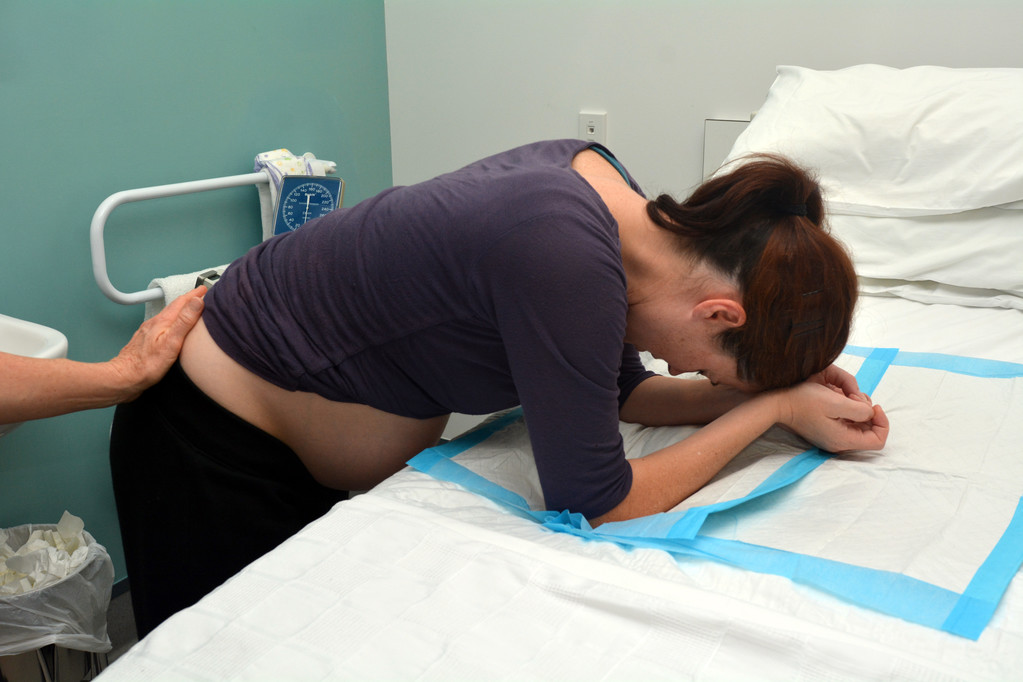Discover effective positions and techniques to alleviate back labor pain in this informative article.
How to Alleviate Back Labor Pain: Positions and Techniques
Back labor pain can be an incredibly challenging aspect of childbirth. But fear not, mama-to-be! There are positions and techniques you can utilize to ease the discomfort and get through this stage like a champ. From understanding the causes and symptoms of back labor pain to incorporating effective positions and techniques, this guide has got you covered. Let’s dive in and find out how to conquer back labor pain with grace and gusto!

Understanding Back Labor Pain
Before we delve into the positions and techniques, it’s important to understand what back labor pain is all about. Back labor pain occurs when the baby’s head presses against your spine during contractions, causing discomfort in your lower back. Ouch! The intensity can vary from mildly annoying to downright agonizing, depending on the individual.
But what exactly causes back labor pain? Let’s explore some of the factors that contribute to this unique sensation. One of the main culprits is the position of the baby. As your little one makes their way through the birth canal, their head may put pressure on your spine, resulting in that nagging ache in your lower back. Additionally, the shape of your pelvis can also play a role. Every woman’s pelvis is unique, and sometimes its shape can make back labor pain more likely to occur.
Another factor to consider is the strength of your contractions. As your body works hard to bring your baby into the world, the force of the contractions can contribute to the intensity of the back pain. It’s important to remember that your baby isn’t intentionally trying to sabotage your labor experience – they’re simply navigating their way through the birth canal, which can sometimes lead to back labor pain.
Symptoms of Back Labor Pain
Back labor pain manifests as a constant, dull ache in your lower back that tends to intensify during contractions. It may also radiate to your thighs and buttocks, giving you that extra special “gift” of discomfort. We feel you, mama! The pain can be relentless, making it challenging to find relief. However, fear not! We’re about to unveil some incredible positions and techniques that can help alleviate the pain and make your labor experience more manageable.
Now that we’ve explored the causes and symptoms of back labor pain, it’s time to dive into the solutions. By using specific positions and techniques, you can help alleviate the discomfort and make your labor journey a little smoother. From gentle stretches to supportive props, we’ve got you covered. So, let’s get started and find the relief you deserve!
The Role of Positions in Alleviating Back Labor Pain
Believe it or not, your position during labor can play a crucial role in minimizing back labor pain. It’s time to channel your inner yogi and explore the power of proper posture and effective positions.
When it comes to back labor pain, the importance of proper posture cannot be overstated. Bad posture is a big no-no. Remember, mama, straighten that spine and open up that pelvis. Maintaining an upright posture not only reduces the pressure on your lower back but also allows your baby to descend more easily. So stand tall, shoulders back, and embrace your power!
Now, let’s get into some nitty-gritty positions that can help alleviate back labor pain. First up, the classic “all-fours” position. Get down on all fours, like a graceful birthing goddess, and rock your hips from side to side. This position helps relieve the pressure on your lower back and encourages your baby to find a more comfortable position.
Another fantastic position is the “sitting on a birthing ball” technique. This magical, bouncy ball not only provides you with a comfortable seat but also helps you maintain an open pelvis. Bounce, sway, and rotate those hips, mama! It’s time to embrace the ball and dance your way through labor!
In addition to these positions, there are many other techniques you can try to alleviate back labor pain. One such technique is the “supported squat.” Find a sturdy surface, like a bed or a chair, and squat down while leaning forward and resting your arms on the surface. This position helps open up your pelvis and relieve the pressure on your lower back.
Another position to consider is the “side-lying” position. Lie on your side with a pillow between your legs for support. This position can help take the pressure off your back and provide some relief during contractions.
If you’re feeling adventurous, you can also try the “hands and knees” position. Get on your hands and knees and rock your hips back and forth. This position not only helps relieve back labor pain but also encourages your baby to rotate into a more favorable position for birth.
Remember, every labor is unique, and what works for one person may not work for another. It’s essential to listen to your body and try different positions to find what brings you the most relief. Don’t be afraid to experiment and explore different options with the guidance of your healthcare provider.
Techniques for Easing Back Labor Pain
While positions are great, let’s not forget the power of techniques in managing back labor pain. These techniques can help you stay calm, centered, and in control during the most intense contractions.
Back labor pain can be intense and challenging to manage, but with the right techniques, you can find relief and comfort. Here are some additional techniques that you can try:
Breathing Techniques for Pain Management
When the pain hits, focus on your breathing, mama. Take deep breaths in through your nose, and exhale slowly through your mouth. Visualize yourself breathing out the pain and tension with each exhale. You’ve got this!
Deep breathing not only helps you relax but also increases the oxygen flow to your muscles, reducing tension and promoting a sense of calm. As you inhale, imagine your breath reaching your lower back, bringing with it a soothing sensation. As you exhale, imagine releasing any discomfort or tightness.
Some women find it helpful to use specific breathing techniques, such as the “slow breath” or “paced breathing.” These techniques involve taking slow, controlled breaths, focusing on a specific count for inhalation and exhalation. Experiment with different techniques to find what works best for you.
Massage Techniques for Back Labor Pain
Who doesn’t love a good massage, especially during labor? Enlist the help of your partner or a supportive birth companion to massage your lower back during contractions. The soothing touch can work wonders in easing the discomfort and providing much-needed relief.
There are various massage techniques that can target the specific areas affected by back labor pain. One technique is the “counter-pressure” technique, where your partner applies firm pressure to your lower back using their hands or a tennis ball. This pressure can help alleviate the intense sensation and provide a sense of relief.
Another technique is the “effleurage” technique, which involves gentle, rhythmic strokes on your lower back. This technique can help relax the muscles and release tension, making the contractions more manageable.
Don’t hesitate to communicate with your birth partner about the intensity and location of the pain. They can adjust their massage techniques accordingly to provide you with the most effective relief.
The Role of Physical Therapy in Back Labor Pain
Physical therapy isn’t just for athletes and injury recovery – it can also be a game-changer when it comes to back labor pain. Let’s explore how this magical therapy can support you during childbirth.
Childbirth is a transformative experience, filled with both joy and challenges. One of the most common challenges women face during labor is back pain. As the baby descends through the birth canal, the pressure on the lower back can be intense. This is where physical therapy comes in, offering a holistic approach to managing and reducing back labor pain.
Benefits of Physical Therapy
Physical therapy helps you strengthen your lower back, pelvis, and abdominal muscles, making them more resilient during labor. Not only does it reduce the risk of back pain, but it also enhances your overall endurance. By engaging in targeted exercises and techniques, you can build the strength and stamina needed to navigate the intense demands of childbirth.
Furthermore, physical therapy promotes proper body mechanics and posture, which are crucial during labor. By learning how to align your body correctly and maintain optimal positioning, you can alleviate unnecessary strain on your back and pelvis.
But physical therapy offers more than just physical benefits. It can also provide emotional and psychological support during this transformative time. The guidance and encouragement from a physical therapist can boost your confidence and help you feel empowered as you prepare for the birthing process.
Physical Therapy Techniques for Back Labor Pain
During physical therapy sessions, you’ll learn various techniques that can help alleviate back labor pain. These may include gentle exercises to strengthen your core, stretching routines to improve flexibility, and even manual therapy to release tension in specific areas. The therapist will tailor the treatment plan to your unique needs, ensuring that you receive the most effective care.
One technique commonly used in physical therapy for back labor pain is the use of heat or cold therapy. Applying a heating pad or ice pack to the affected area can provide temporary relief and reduce inflammation. The therapist will guide you on the proper application and duration of these therapies, ensuring their safety and effectiveness.
In addition to physical exercises, your therapist may introduce relaxation techniques such as deep breathing, visualization, and mindfulness. These techniques can help you manage pain and promote a sense of calm during labor. By incorporating these practices into your daily routine, you can develop the skills necessary to navigate the challenges of childbirth with grace and composure.
Remember, mama, a little therapy can go a long way! By investing in physical therapy, you are investing in your own well-being and the well-being of your baby. So, embrace the support and guidance of a physical therapist, and let them be your cheerleading squad as you embark on this incredible journey of bringing new life into the world.
Medical Interventions for Back Labor Pain
In some cases, non-medical interventions may not provide sufficient relief for back labor pain. Don’t worry, though – medical interventions are there to save the day when needed. Let’s explore some options!

Medications for Back Labor Pain
When the pain becomes too intense to handle, your healthcare provider may recommend pain medications such as epidurals or narcotics. These can significantly reduce or even eliminate back labor pain, allowing you to focus on the joy of bringing your little one into the world.
When to Seek Medical Help
While most cases of back labor pain can be managed with non-medical interventions, it’s important to recognize when medical help may be necessary. If your pain becomes excruciating, you experience bleeding, or have any concerns, don’t hesitate to reach out to your healthcare provider. They are here to support you every step of the way.
And that wraps up our guide on how to alleviate back labor pain using positions and techniques. Just remember, mama, you are stronger than you know, and you have an entire arsenal of positions and techniques at your disposal. Embrace the journey, trust your body, and prepare to welcome your little bundle of joy into the world with love and resilience.



